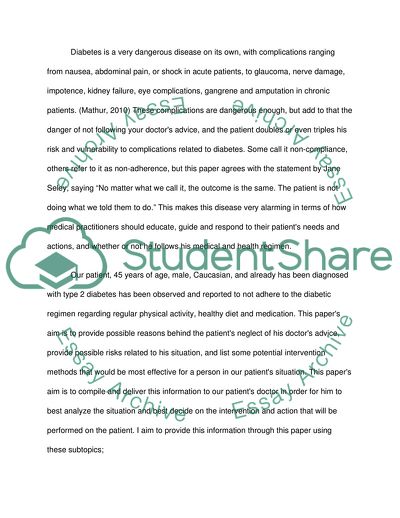Cite this document
(The Patient With Adult-Onset Diabetes Case Study, n.d.)
The Patient With Adult-Onset Diabetes Case Study. https://studentshare.org/health-sciences-medicine/1769103-case-1-a-general-practitioner-gp-is-treating-a-45-year-old-white-male-with-type-2-diabetes-who-is-failing-to-adhere-to-his-diabetic-regimen-of-regular-physical-activity-healthy-eating-and-medication-it-is-your-job-to-advise-the-gp-on-the-possible
The Patient With Adult-Onset Diabetes Case Study. https://studentshare.org/health-sciences-medicine/1769103-case-1-a-general-practitioner-gp-is-treating-a-45-year-old-white-male-with-type-2-diabetes-who-is-failing-to-adhere-to-his-diabetic-regimen-of-regular-physical-activity-healthy-eating-and-medication-it-is-your-job-to-advise-the-gp-on-the-possible
(The Patient With Adult-Onset Diabetes Case Study)
The Patient With Adult-Onset Diabetes Case Study. https://studentshare.org/health-sciences-medicine/1769103-case-1-a-general-practitioner-gp-is-treating-a-45-year-old-white-male-with-type-2-diabetes-who-is-failing-to-adhere-to-his-diabetic-regimen-of-regular-physical-activity-healthy-eating-and-medication-it-is-your-job-to-advise-the-gp-on-the-possible.
The Patient With Adult-Onset Diabetes Case Study. https://studentshare.org/health-sciences-medicine/1769103-case-1-a-general-practitioner-gp-is-treating-a-45-year-old-white-male-with-type-2-diabetes-who-is-failing-to-adhere-to-his-diabetic-regimen-of-regular-physical-activity-healthy-eating-and-medication-it-is-your-job-to-advise-the-gp-on-the-possible.
“The Patient With Adult-Onset Diabetes Case Study”. https://studentshare.org/health-sciences-medicine/1769103-case-1-a-general-practitioner-gp-is-treating-a-45-year-old-white-male-with-type-2-diabetes-who-is-failing-to-adhere-to-his-diabetic-regimen-of-regular-physical-activity-healthy-eating-and-medication-it-is-your-job-to-advise-the-gp-on-the-possible.


